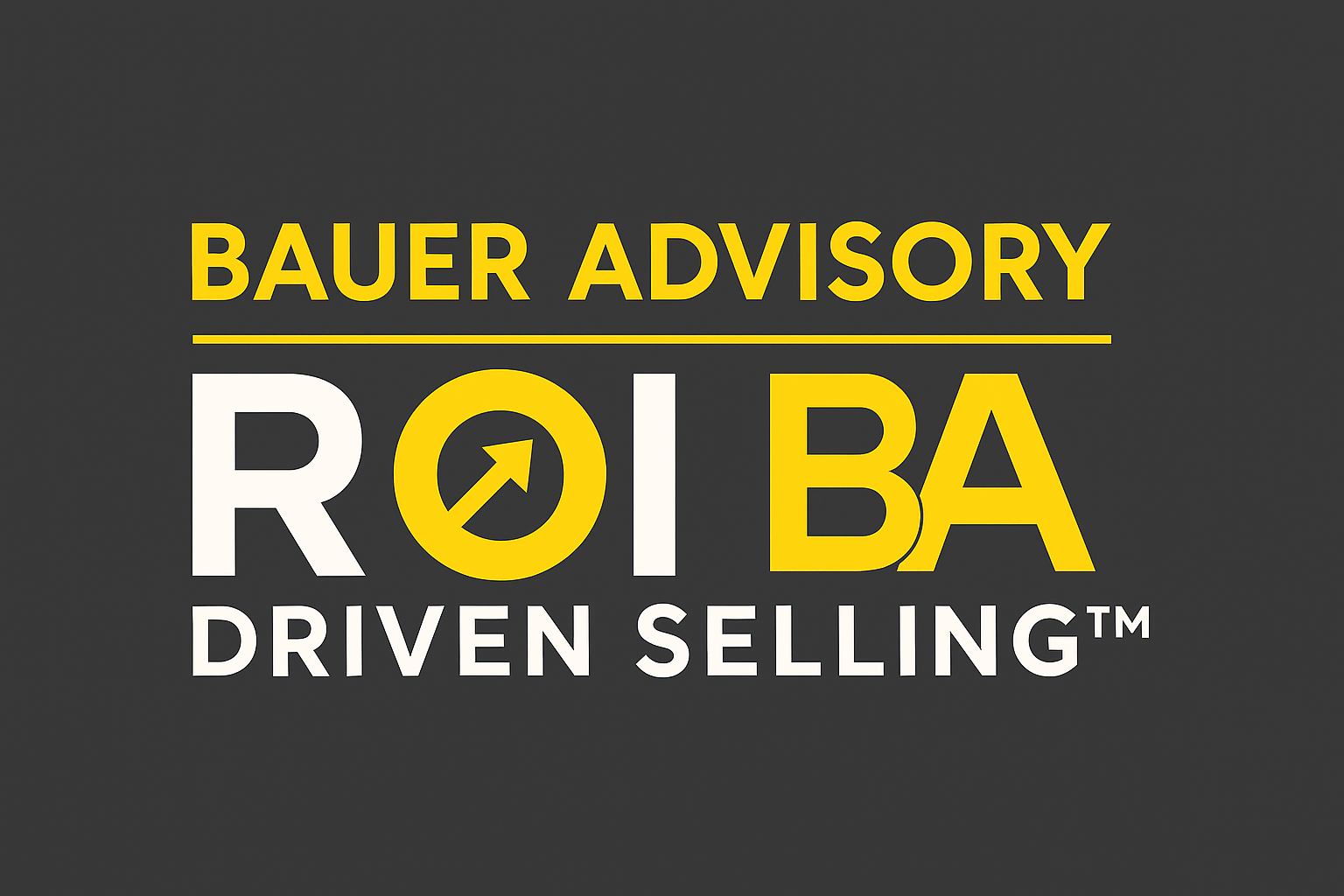
Supercharging Sales
Performance with ROI-Driven Selling™
Most organizations invest heavily in sales training — Challenger, Sandler, Miller Heiman, and others. These programs have advanced the profession, raised skills, and delivered structure.
But despite the investment, many sales leaders quietly admit a frustrating truth: win rates remain flat, cycles drag on, and salespeople revert to old habits.
The problem isn’t that today’s training is bad. It’s that knowledge rarely translates into consistent performance in the field.
What’s needed isn’t more theory, but a unifying overlay that ties everything together — and makes it stick.
For decades, training has promised transformation. Yet studies consistently show that without reinforcement, more than 80% of sales training content is forgotten within 90 days (Harvard Business Review, 2017). Ardent Learning reports the same: most learners forget 84–90% of material within 90 days. The Association for Talent Development (ATD) calls this the 'sales training black hole.'
Meanwhile, McKinsey has found that buying groups now involve 6–10 stakeholders. Each comes with different priorities — finance, IT, operations, and end users. Without a unifying decision lens, deals stall. Gartner has repeatedly emphasized that ROI and total cost of ownership outrank features in executive buying decisions. Yet most reps still default to feature-selling or outdated closing tricks.
In our office, we have a saying
“Buyers take the path of least resistance. ROI is the road of least resistance.”
ROI is not just a financial calculation. It is the only decision-making language that every stakeholder understands. When a buying committee debates features, opinions scatter. But when ROI enters the room, people align. Finance, IT, operations, and leadership may disagree on details, but they all agree on value.
Think of a family car purchase. A husband wants all the upgrades. His wife says: 'We can’t afford it.' What she’s really saying is that the return on investment isn’t there. She’s running the ROI formula in her head, weighing cost against benefit. And usually, once ROI is raised, alignment follows. The same principle holds true in business.
Without ROI, sellers are chasing ghosts — hidden politics, personal preferences, or unspoken fears. With ROI, they create a single, defensible thread that ties the decision together.
Buyers are more sophisticated than ever. They are armed with information, skeptical of sales tactics, and under pressure themselves. Just as doctors and lawyers must take continuing education to stay licensed, salespeople must evolve to stay credible.
Without an overlay like ROI-Driven Selling™, training decays, skills atrophy, and teams burn out.
With ROI-Driven Selling™, every conversation has purpose, every deal has a business case, and every salesperson has a framework that sticks.
These methods are not classroom theories. They’ve been proven in real deals
- $150M State Strategic Sourcing Contracts: A three-person reseller, led by Dan, beat Dell corporate. He identified errors in the bid, reframed around ROI, and managed both customer and Dell corporate conflicts. Two contracts were won, one strategically given up to protect the larger award.
- California DIR Case Management System: The state was prepared to award IBM a 26-city system. Sacramento Magazine later quoted: “Dan is very professional. We were ready to go with IBM, but he convinced us his way was better. And he’s right — we’re very happy.” Apple recognized the achievement with an award trip to Hawaii.
- $75M California State IT Contracts: Won over entrenched competitors through persistence, ROI framing, and criss-cross stakeholder alignment.
- Doctor’s Office Billing System: Stabilized a medical practice’s cash flow by reframing around ROI — reducing claim rejections, improving reimbursements, and freeing staff time.
From $20K SaaS rollouts to nine-figure government contracts, the principle holds: ROI unifies decisions and wins deals.
Built from 50 years of trial and error, ROI-Driven Selling™ is not a theory. It is a field-tested framework refined through wins and losses across industries.
The framework includes:
- **Multi-Cycle Prospecting™** – keeping accounts alive.
- **Dual-Track Profiling™** – aligning seller and buyer profiles for style fit.
- **Criss-Cross Branching™** – expanding influence across the organizational chart.
- **The Velvet Glove Close™** – closing with persistence and finesse.
- **ROI as the Hub** – tying every move to measurable outcomes.
This isn’t about replacing Challenger or Sandler. It’s about supercharging them. ROI-Driven Selling™ ensures what’s learned in training translates into performance where it matters: in the field.
Training alone isn’t enough. It’s time to rethink how we prepare sales teams. ROI-Driven Selling™ is the unifying overlay that makes every move more effective. It doesn’t replace your training. It makes it work.
At the end of the day, salespeople have to deliver results. ROI-Driven Selling™ shows them how.
Dan Niebauer has closed more than half a billion dollars in sales (adjusted for inflation in today's dollars) for around five decades, including a landmark $150M state IT contract. He holds a Bachelor’s in Teaching from the University of Wisconsin–Stevens Point, a Master of Education in Professional Development (MEPD) in Education and Information Technology from UWSP, and an MBA in Finance and Marketing from Gonzaga University.
Over his career Dan has been a teacher, a sales person, systems engineer, sales manager, sales VP, strategic deal leader and has owned multiple IT businesses. Known for winning against entrenched competitors, he has distilled his battle-tested methods into ROI-Driven Selling™ — to help organizations bypass decades of trial and error and transform knowledge into performance.
1. Harvard Business Review (2017). Your Sales Training Is Probably Lackluster. Here’s How to Fix It.
2. Ardent Learning (2021). What Is the Forgetting Curve in Sales Training?
3. Association for Talent Development (2019). The Sales Training Black Hole: Why Most Sales Training Fails.
4. McKinsey & Company (2018). From Sales to Value: How to Win with a Value-Selling Approach.
5. Harvard Business Review (2015). Why Value-Based Selling Outperforms Traditional Sales.
6. Journal of Applied Psychology (2010). Active Learning vs. Passive Learning Retention Rates.
7. Journal of Workplace Learning (2017). Scenario-Based vs. Lecture-Based Training.


